COVID-19: TCTMD’s Dispatch for June Week 4
We’re curating a list of COVID-19 research and other useful content, and updating it regularly.
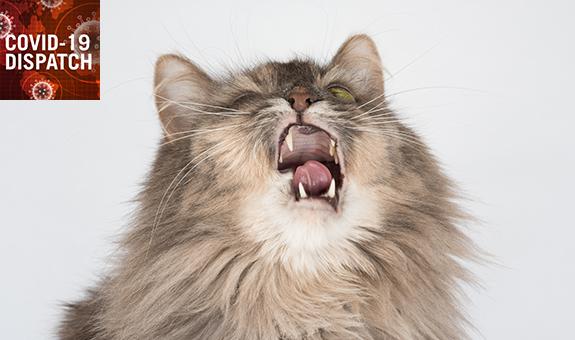
Since March 2020, TCTMD reporter Todd Neale has been writing up breaking news and peer-reviewed research related to COVID-19 every weekday. In July 2021, we transitioned to Mondays, Wednesdays, and Fridays. If you have something to share, tell us. All of our COVID-19 coverage can be found on our COVID-19 Hub.
June 30, 2022
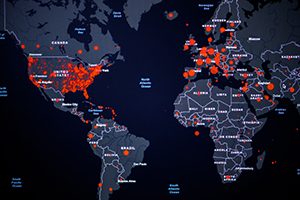 COVID-19 cases have risen around the world to the highest level since April, CIDRAP News reports. The latest update from the World Health Organization (WHO) shows the number of weekly cases increased by 18% in the week ending June 26 compared with the week prior, reflecting growing numbers in four of six regions. The number of weekly deaths remained relatively stable, increasing by 3%. The more-transmissible Omicron BA.4 and BA.5 subvariants now account for most infections (55%).
COVID-19 cases have risen around the world to the highest level since April, CIDRAP News reports. The latest update from the World Health Organization (WHO) shows the number of weekly cases increased by 18% in the week ending June 26 compared with the week prior, reflecting growing numbers in four of six regions. The number of weekly deaths remained relatively stable, increasing by 3%. The more-transmissible Omicron BA.4 and BA.5 subvariants now account for most infections (55%).
Coinciding with that news was an announcement from the US Food and Drug Administration (FDA) on Thursday recommending inclusion of an Omicron BA.4/BA.5 spike protein component in future COVID-19 vaccine booster doses. The decision follows endorsement of that move from an advisory committee earlier this week (Associated Press). “The FDA has been planning for the possibility that vaccines would need to be modified to address circulating variants and previously provided guidance to industry on how to do so efficiently,” Peter Marks, MD, PhD, director of the FDA’s Center for Biologics Evaluation and Research, said in a statement.
A systematic review in the BMJ underscores the importance of adequate ventilation to stem the spread of SARS-CoV-2 indoors, showing that long-distance airborne transmission (over more than 2 meters) can occur in restaurants and workplaces, on public transportation, and in other indoor venues. Stephanie Dancer, a microbiologist, raises questions about the quality of the “tenuous” evidence in an accompanying editorial, but says it “validates the premise that tiny respiratory particles containing SARS-CoV-2 freely transmit throughout inadequately ventilated environments. . . . Now, indeed, is the time for an indoor air revolution.”
In the US, maternal deaths jumped by 33.3% after March 2020, “a figure higher than the 22% overall excess death estimate associated with the pandemic,” researchers write in JAMA Network Open. The increase was greatest among Hispanic and non-Hispanic Black women. “Change in maternal deaths during the pandemic may involve conditions directly related to COVID-19 (respiratory or viral infection) or conditions exacerbated by COVID-19 or other healthcare disruptions (diabetes or cardiovascular disease) but could not be discerned from the data,” the authors note. CIDRAP News has more.
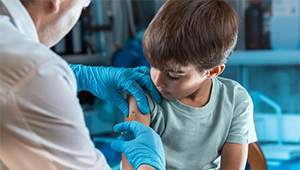 The risk of developing myocarditis or pericarditis after receiving an mRNA-based COVID-19 vaccine is rare overall, but it does fluctuate based on factors such as vaccine type and the interval between doses, affirms a study in JAMA Network Open. Risk was higher with the Moderna vaccine than with the Pfizer/BioNTech shot and when the interval between the first two doses was 30 days or less, versus 56 days or more. “You can make slight tweaks to your program to make things a little bit safer,” a study author told TCTMD, adding, however, “that these are really rare side effects.”
The risk of developing myocarditis or pericarditis after receiving an mRNA-based COVID-19 vaccine is rare overall, but it does fluctuate based on factors such as vaccine type and the interval between doses, affirms a study in JAMA Network Open. Risk was higher with the Moderna vaccine than with the Pfizer/BioNTech shot and when the interval between the first two doses was 30 days or less, versus 56 days or more. “You can make slight tweaks to your program to make things a little bit safer,” a study author told TCTMD, adding, however, “that these are really rare side effects.”
Real-world data from Israel published in the New England Journal of Medicine indicate that the Pfizer/BioNTech vaccine provided moderate protection against documented SARS-CoV-2 infection among children ages 5 to 11 at a time when Omicron was becoming the dominant variant. Vaccine effectiveness was 17% after the first dose and 51% after the second dose. Effectiveness against symptomatic COVID-19 was 18% after the first dose and 48% after the second.
A research letter in NEJM suggests that some people infected with either the Omicron or Delta variants of SARS-CoV-2 shed culturable virus for more than 5 days after they first display symptoms or test positive for the virus, perhaps raising questions about the recommend shortening of the isolation period for infected patients from 10 to 5 days by the US Centers for Disease Control and Prevention (CDC). The authors note, however, that “although culture positivity has been proposed as a possible proxy for infectiousness, additional studies are needed to correlate viral-culture positivity with confirmed transmission in order to inform isolation periods.”
Nonpharmaceutical interventions implemented during the pandemic in France, like social distancing and mask wearing, were associated with a decline in pediatric cases of invasive pneumococcal disease (IPD), influenza, and respiratory syncytial virus (RSV), although the pneumococcal carriage rate remained the same, according to a study in JAMA Network Open. The findings suggest that targeting influenza and RSV “may be able to prevent a large proportion of IPD cases without creating gaps in the pneumococcal ecological niche, which is the main limitation of current pneumococcal conjugate vaccines,” the authors say. An invited commentary further discusses the implications.
On Wednesday, the FDA revised the labeling for tixagevimab co-packaged with cilgavimab (Evusheld; AstraZeneca), which is authorized for use as preexposure prophylaxis of COVID-19 for select individuals, to recommend repeat dosing every 6 months if protection is still needed. Previously, there was no specific recommendation regarding dosing interval.
Pfizer and BioNTech, partners on one of the most widely used COVID-19 vaccines, will start testing vaccines designed to protect against a variety of coronaviruses in the second half of the year, Reuters reports. “Their experimental work on shots that go beyond the current approach include T-cell-enhancing shots, designed to primarily protect against severe disease if the virus becomes more dangerous, and pan-coronavirus shots that protect against the broader family of viruses and its mutations,” the story notes.
 A Nature news story discussed the first reported case of a person catching SARS-CoV-2 from a cat. Scientists in Thailand determined that the transmission happened after a cat that was being tested for the virus sneezed in the face of a veterinary surgeon, who was wearing a mask and gloves but no eye protection. A researcher notes that animal-to-human transmission of SARS-CoV-2 is rare.
A Nature news story discussed the first reported case of a person catching SARS-CoV-2 from a cat. Scientists in Thailand determined that the transmission happened after a cat that was being tested for the virus sneezed in the face of a veterinary surgeon, who was wearing a mask and gloves but no eye protection. A researcher notes that animal-to-human transmission of SARS-CoV-2 is rare.
June 27, 2022
 Vaccinations against COVID-19 likely saved nearly 20 million deaths in 2021, a modelling study in the Lancet concludes. That number would have been even higher if the original vaccination coverage targets set by the COVID-19 Vaccines Global Access (COVAX) Facility and World Health Organization had been met. “In low-income countries, we estimated that an additional 45% (95% CrI 42–49) of deaths could have been averted had the 20% vaccination coverage target set by COVAX been met by each country, and that an additional 111% of deaths could have been averted had the 40% target set by WHO been met by each country by the end of 2021,” the authors conclude.
Vaccinations against COVID-19 likely saved nearly 20 million deaths in 2021, a modelling study in the Lancet concludes. That number would have been even higher if the original vaccination coverage targets set by the COVID-19 Vaccines Global Access (COVAX) Facility and World Health Organization had been met. “In low-income countries, we estimated that an additional 45% (95% CrI 42–49) of deaths could have been averted had the 20% vaccination coverage target set by COVAX been met by each country, and that an additional 111% of deaths could have been averted had the 40% target set by WHO been met by each country by the end of 2021,” the authors conclude.
As STAT points out, “That makes the recent report both a dramatic demonstration of the protective power of these shots and a grim tally of the consequences of an uneven and inequitable vaccine rollout.”
One of the largest studies to date—this one from southern China—confirms that COVID-19 vaccines do not increase the risk of MACE in people with preexisting cardiovascular disease. “At the time of the vaccination rollout in Hong Kong, there was a lot of vaccine hesitancy, especially among those with chronic health conditions, including those with cardiovascular diseases,” senior study author Esther W. Chan, PhD (The University of Hong Kong, China), told TCTMD. The paper was published last week in Cardiovascular Research, and TCTMD’s Yael Maxwell has the details.
The US Food and Drug Administration’s Vaccines and Related Biological Products Advisory Committee meets tomorrow to discuss whether (and how) the composition of COVID-19 vaccines should be modified to better target newer strains of the virus. The meeting will be broadcast live on YouTube.
As a New York Times article explains, however, the most recent clinical trials testing vaccinations targeting Omicron and its subvariants may be too little, too late. “The virus is evolving so quickly that new vaccine formulations are out of date before such trials are even finished,” writes Sharon LaFraniere.
 The American Heart Association and the American College of Cardiology (AHA/ACC) have released a document outlining definitions of various cardiovascular and noncardiovascular complications of SARS-CoV-2 infection, writes TCTMD’s Todd Neale. The paper, published online last week in both Circulation: Cardiovascular Quality and Outcomes and the Journal of the American College of Cardiology aimed “to standardize the definitions of the various terms people use, so that when they talk to each other, everybody kind of knows what the words mean and what’s going on with them,” said Sandeep Das, MD (UT Southwestern Medicine Center, Dallas, TX), vice chair of the writing committee.
The American Heart Association and the American College of Cardiology (AHA/ACC) have released a document outlining definitions of various cardiovascular and noncardiovascular complications of SARS-CoV-2 infection, writes TCTMD’s Todd Neale. The paper, published online last week in both Circulation: Cardiovascular Quality and Outcomes and the Journal of the American College of Cardiology aimed “to standardize the definitions of the various terms people use, so that when they talk to each other, everybody kind of knows what the words mean and what’s going on with them,” said Sandeep Das, MD (UT Southwestern Medicine Center, Dallas, TX), vice chair of the writing committee.
The true burden of COVID-19 in children remains unclear, especially as new variants emerge, but as a study from Nicaragua makes clear, very young children may actually be the most vulnerable. Among 1,824 kids who underwent testing for seropositivity, children under the age of 2 were the ones most likely to be hospitalized, and—notably—one in five symptomatic SARS-CoV-2 episodes were among kids who’d already recovered from a prior COVID-19 infection, researchers write in JAMA Network Open.
An accompanying editorial offers some takeaways for parents and physicians grappling with the risks/benefits of vaccinating young children, now that vaccines in many parts of the world have been approved in children 6 months and older.
The UK government has made its first compensation payments to bereaved families and patients who were injured or died as a result of a COVID-19 vaccine. “Vikki Spit from Cumbria is believed to be the first person to receive compensation, after her 48-year-old partner, Zion, became ill eight days after receiving the AstraZeneca vaccine,” Jacqui Wise writes in the BMJ. “A handful of other people have received payments in the past few days under the government’s vaccine damage payment scheme (VDPS), which pays out up to a maximum of £120,000 (€140,000; $150,000).”
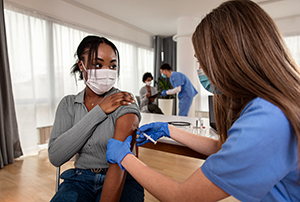 Investigators who were among the first to rigorously document how platelet-activating antiplatelet factor 4 (PF4) antibodies induced by adenovirus vector-based vaccines lead to vaccine-induced immune thrombotic thrombocytopenia (VITT) have now turned their attention to the possibility that subsequent COVID-19 infection in VITT survivors could trigger the same potentially lethal antibody reaction. In a research letter published in the New England Journal of Medicine over the weekend, Andreas Greinacher, MD, and colleagues conclude—reassuringly—that cross-reactivity between PF4 and the SARS-CoV-2 spike protein resulting in VITT recurrence triggered by infection is unlikely. “Our finding that COVID-19 does not restimulate anti-PF4 antibodies in patients with a history of VITT provides further insights into the pathogenesis of this disorder and may be helpful in counseling patients regarding further COVID-19 vaccination with an mRNA vaccine,” they write.
Investigators who were among the first to rigorously document how platelet-activating antiplatelet factor 4 (PF4) antibodies induced by adenovirus vector-based vaccines lead to vaccine-induced immune thrombotic thrombocytopenia (VITT) have now turned their attention to the possibility that subsequent COVID-19 infection in VITT survivors could trigger the same potentially lethal antibody reaction. In a research letter published in the New England Journal of Medicine over the weekend, Andreas Greinacher, MD, and colleagues conclude—reassuringly—that cross-reactivity between PF4 and the SARS-CoV-2 spike protein resulting in VITT recurrence triggered by infection is unlikely. “Our finding that COVID-19 does not restimulate anti-PF4 antibodies in patients with a history of VITT provides further insights into the pathogenesis of this disorder and may be helpful in counseling patients regarding further COVID-19 vaccination with an mRNA vaccine,” they write.
Sickle cell trait (SCT) is associated with increased risk of mortality and acute kidney failure following COVID-19, write the authors of a genetic association study published in JAMA Internal Medicine. “Our findings suggest that SCT can further contribute to worse outcomes in individuals of African ancestry, and there is a need for new treatment strategies to improve clinical outcomes of COVID-19 in individuals with SCT.”
June 23, 2022
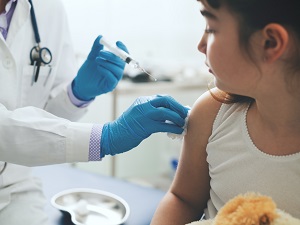 On June 17, the US Food and Drug Administration (FDA) accepted the unanimous advice of its advisory panel and expanded the emergency use authorization for both Moderna and Pfizer’s vaccines to children as young as 6 months, with the Centers for Disease Control and Prevention (CDC) endorsing that decision and issuing its own recommendation a day later. Now, reports STAT, parents may be wondering which vaccine is the right one. “We can’t tell you which is best for your child,” write Helen Branswell and Matthew Herper. “But we can tell you that in this age group, the Pfizer-BioNTech and the Moderna vaccines probably differ more than they do in any other age group on the vaccination spectrum.”
On June 17, the US Food and Drug Administration (FDA) accepted the unanimous advice of its advisory panel and expanded the emergency use authorization for both Moderna and Pfizer’s vaccines to children as young as 6 months, with the Centers for Disease Control and Prevention (CDC) endorsing that decision and issuing its own recommendation a day later. Now, reports STAT, parents may be wondering which vaccine is the right one. “We can’t tell you which is best for your child,” write Helen Branswell and Matthew Herper. “But we can tell you that in this age group, the Pfizer-BioNTech and the Moderna vaccines probably differ more than they do in any other age group on the vaccination spectrum.”
New York City, once the “epicenter of the COVID pandemic” in the US has opened vaccine hubs around the city, including Times Square, to serve children 6 months and older, the New York Times reports.
The European Medicines Agency (EMA) has recommended granting a marketing authorization for the COVID-19 inactivated, adjuvanted vaccine VLA2001, made by the French company Valneva, for use in the primary vaccination of people from 18 to 50 years of age, making it the sixth vaccine approved in European member states. An EMA statement summarizes the data in support of the decision.
 Very little about the COVID-19 pandemic could be described as “equitable,” most notably the deeper impact the virus has had on lower income and marginalized communities. Now research by the CDC makes clear that oral antiviral drugs in the US, effective at preventing progression to severe disease, have been disproportionately dispensed to neighborhoods with the most socially and economically stable communities. Between December 23, 2021, and May 21, 2022, more than 1 million oral antiviral prescriptions were filled in the US, but rates were highest in “low-vulnerability zip code” regions (373.3 per 100,000 people) and lowest in areas with the highest vulnerability (287.4 per 100,000 people). That’s despite these zip codes having the largest number of dispensing sites, investigators write in Morbidity and Mortality Weekly Report.
Very little about the COVID-19 pandemic could be described as “equitable,” most notably the deeper impact the virus has had on lower income and marginalized communities. Now research by the CDC makes clear that oral antiviral drugs in the US, effective at preventing progression to severe disease, have been disproportionately dispensed to neighborhoods with the most socially and economically stable communities. Between December 23, 2021, and May 21, 2022, more than 1 million oral antiviral prescriptions were filled in the US, but rates were highest in “low-vulnerability zip code” regions (373.3 per 100,000 people) and lowest in areas with the highest vulnerability (287.4 per 100,000 people). That’s despite these zip codes having the largest number of dispensing sites, investigators write in Morbidity and Mortality Weekly Report.
A Kaiser Family Foundation analysis delving into the inequitable distribution of oral antivirals Paxlovid and Lagevrio has further insights, concluding: “While treatments are available at facilities across the country and nearly all people live in a county with such a facility, regardless of their income, race/ethnicity, or whether they live in a metro or non-metro area, some disparities in access persist among the potentially highest risk and highest need counties.”
Also in MMWR this week, investigators looked at hospitalizations and emergency department visits among COVID-19-positive patients prescribed Paxlovid in California. The upshot: such encounters were rare among patients taking Paxlovid (< 1%). “The rarity of these outcomes is consistent with evidence from recent case reports and large observational studies, which found that symptoms experienced by patients with COVID-19 rebound after treatment with Paxlovid are milder than those experienced during the primary infection and are unlikely to lead to hospitalization,” the authors conclude.
During the Omicron surge, a fourth dose of the Pfizer/BioNTech vaccine, as compared with three, was associated with a “34% protection against infection, 64% to 67% against hospitalizations for mild-to-moderate and severe illness, and 72% against deaths” among residents of long-term care facilities, researchers report in JAMA Internal Medicine.
Early in the COVID-19 pandemic, scientists identified a “Kawasaki-like” illness in kids and teens that was soon given the moniker multisystem inflammatory syndrome in children (MIS-C). But as for Kawasaki Disease (KD) itself, the pandemic period has offered some unexpected clues about the triggers of this little-understood condition. A cohort study published in JAMA Network Open indicates that rates of KD fell by 28% in the US and remained low during periods of COVID-19-related masking and school closures. “These findings suggest that social behavior is associated with exposure to the agent(s) that trigger KD and are consistent with a respiratory portal of entry for the agent(s),” authors conclude. A press release has more.
 The rise of virtual medical meetings during the pandemic have led some physicians and researchers to think about the carbon footprint of meeting travel. A cohort study in JAMA Oncology estimates that 469.4 metric tons of CO2 emissions were avoided as a result of an oncology conference going virtual in 2021, “the equivalent of the annual emissions of 102.4 passenger vehicles.” Those calculations accounted for emissions associated with online conference streaming (0.91 metric tons) and food delivery (0.70 metric tons). “Recognizing that in-person meetings may likely continue in the postpandemic era, professional societies may wish to consider prioritizing sustainability and environmental outcomes and enacting these considerations in their planning,” authors say.
The rise of virtual medical meetings during the pandemic have led some physicians and researchers to think about the carbon footprint of meeting travel. A cohort study in JAMA Oncology estimates that 469.4 metric tons of CO2 emissions were avoided as a result of an oncology conference going virtual in 2021, “the equivalent of the annual emissions of 102.4 passenger vehicles.” Those calculations accounted for emissions associated with online conference streaming (0.91 metric tons) and food delivery (0.70 metric tons). “Recognizing that in-person meetings may likely continue in the postpandemic era, professional societies may wish to consider prioritizing sustainability and environmental outcomes and enacting these considerations in their planning,” authors say.
Todd Neale is the Associate News Editor for TCTMD and a Senior Medical Journalist. He got his start in journalism at …
Read Full Bio


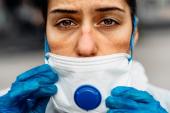

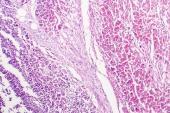
Comments